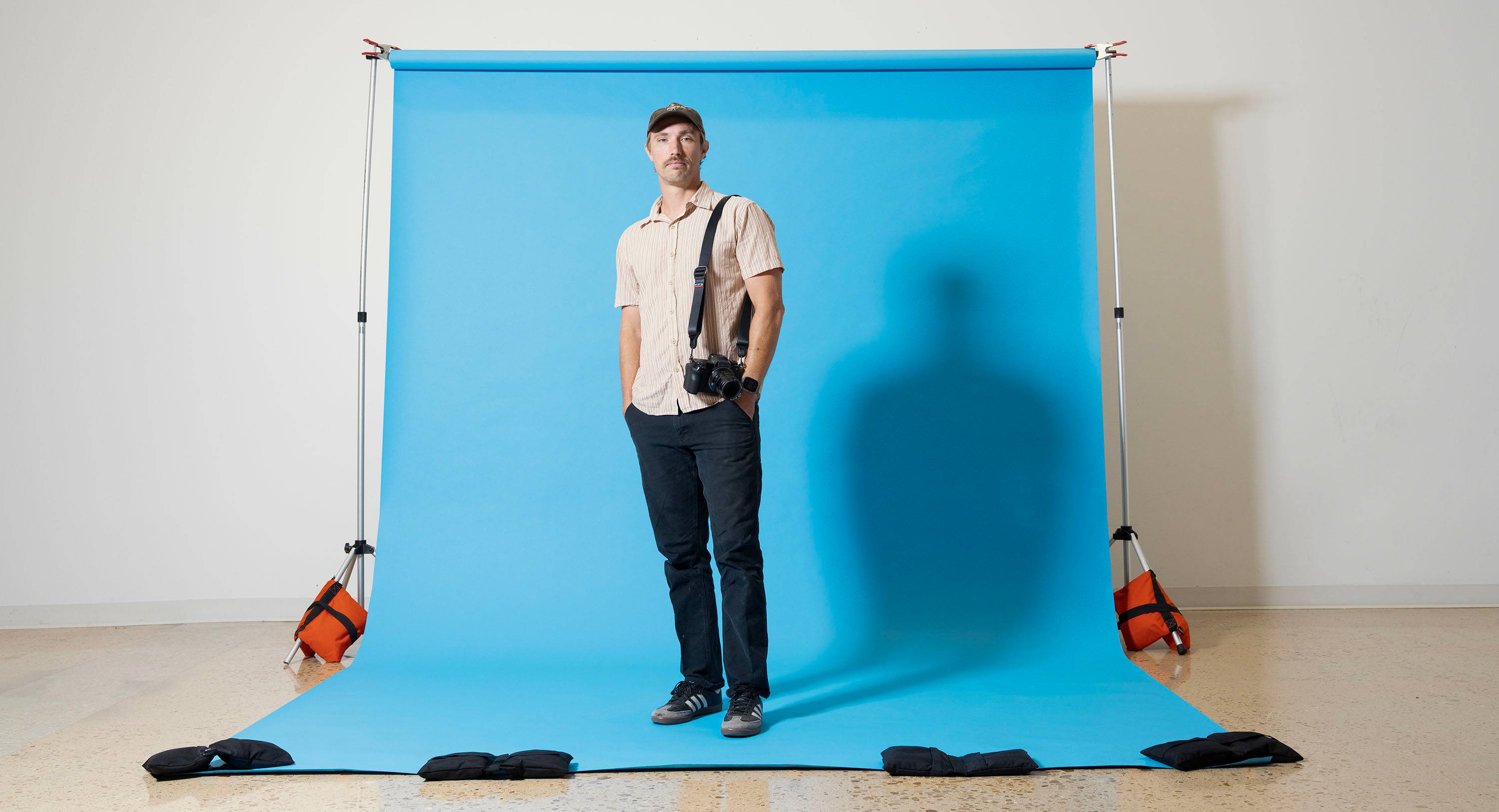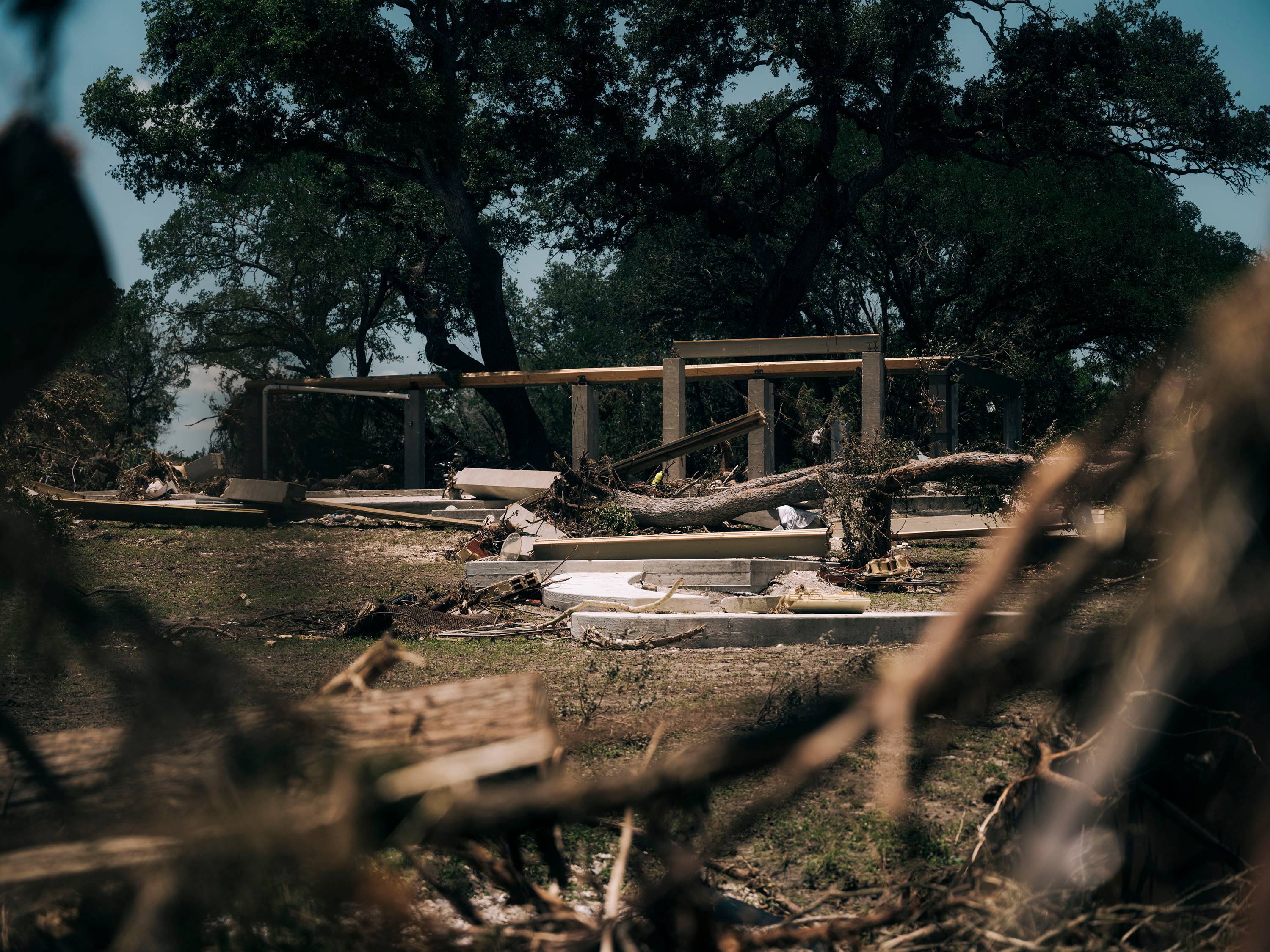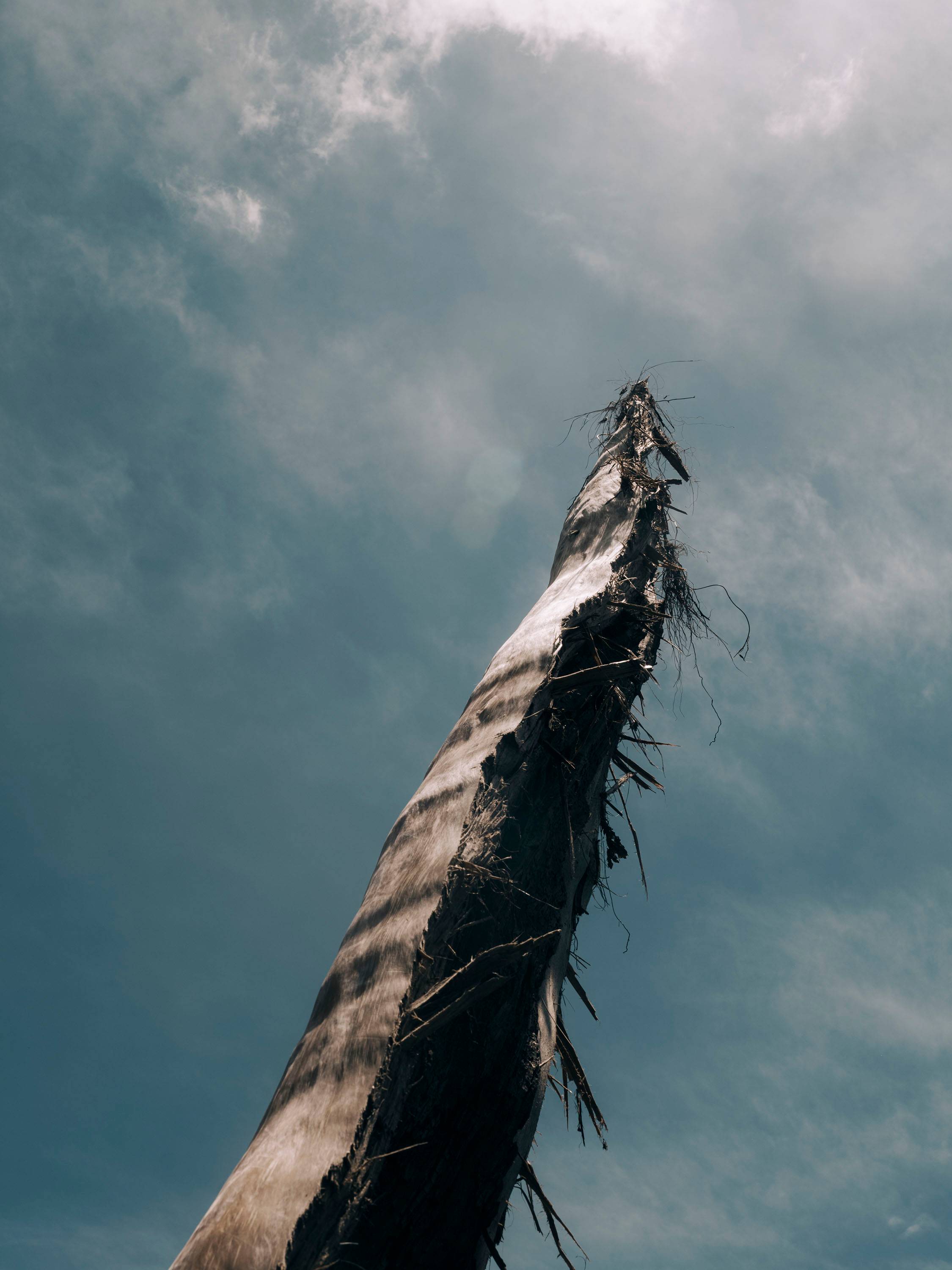On July 7, Jordan Vonderhaar told his editor at The New York Times he needed a break. The independent photographer was on his third day documenting the aftermath of the Guadalupe River flood, which tore through the Kerrville area before dawn on Independence Day, sweeping away more than 119 victims.
Human Focus: Capturing the Devastation of the July Fourth Flood

When the Kerrville area flooded, Texas Monthly turned to Texas State photography lecturer Jordan Vonderhaar to portray the emotional aftermath
“Thirty miles or more of riverfront was like a war zone. I’d never seen anything like it,” said Vonderhaar, a 2012 Texas State University graduate and a photography lecturer in the School of Art and Design. “Volunteers were driving in from everywhere. People were looking for their own family members. Even with the massive law-enforcement presence, those first few days were a free-for-all.”
That afternoon, Vonderhaar fielded an urgent text message from Texas Monthly, where he’s a frequent contributor. One of the magazine’s editors, Aaron Parsley, had narrowly survived the flood. His 20-month-old nephew, Clay, had not. Through his grief, Parsley had quickly written a harrowing personal account of his family’s tragedy. The magazine wanted Vonderhaar to photograph the story—on a 24-hour deadline.
“I didn’t get the draft until 11 p.m. that night, so I was in bed with my wife, and we read the story together,” Vonderhaar recalled. “It was really tough to read, especially as the parents of two young children. I still feel emotional thinking about it.”
The next morning, July 8, Vonderhaar drove from his home in San Marcos back to Kerr County. Parsley’s cousin escorted him past a law-enforcement barricade to the site between Ingram and Hunt where the family’s getaway home once stood.
“There was nothing left,” Vonderhaar recalled. “Just pillars.”

Search drones buzzed overhead. Heavy machinery rumbled in the distance. Otherwise, the riverfront was silent.
“It was overwhelming. It was extremely hot. It was eerie,” Vonderhaar said. “The water had already receded and was starting to clear up, and all around you are the remnants of how powerful this river could be. Then you look at the river, and it’s a trickle.”
For The New York Times, Vonderhaar had raced to file photos three times a day. The Texas Monthly assignment required a different pace.
“I tried to really slow down and let my feelings direct me as I was taking pictures,” he said. “It’s hard to make emotional images without people, right? It’s also hard to make emotional images about a moment that has already happened. It’s about visualizing the past and trying to find that singular thing that represents the whole.”
Although he teaches photography at TXST, Vonderhaar didn’t study the subject in college. He majored in sociology, picking up photography during a summer job as a backpacking guide in Colorado. After graduation, he worked in sales at Yeti for a couple of years, then spent two years hustling to break into freelancing.
“I just started shooting my own stories and emailing editors,” he said. “I had no idea what I was doing.”
Two years later, in 2019, his persistence paid off. When state crews started clearing homeless camps in Austin, Vonderhaar passed out his phone number to several unhoused people and asked them to call when the crews arrived. The gambit worked. His exclusive photos ran in the Texas Tribune, launching a career that now spans state and national publications.
Drawing on his sociology education at Texas State, Vonderhaar often tackles weighty subjects such as immigration and drought. He also covered the Uvalde school shooting three years ago.
“Some of the things I’ve covered have been horrific, but that was the worst,” Vonderhaar recalled. “It’s the worst thing I can imagine as a parent.”
Parsley’s first-person flood narrative struck Vonderhaar as the most powerful way to tell a disaster story.
“This is how it felt. This is what we went through. This is what we’re left with,” Vonderhaar explained. “It’s a very human story.”


On assignment, Vonderhaar first tried to capture the enormity of the destruction. “That was impossible,” he said. “There was just too much devastation.” Instead, he focused on details that Parsley’s cousin pointed out—a comforter from one of the beds, a set of dishes, a chair, and an unopened bottle of sake that had been collecting dust for years because nobody wanted to drink it.
One of Vonderhaar’s more striking images shows the bent rebar that once connected a concrete pillar to the foundation of the Parsley family’s home. Another—chosen for the magazine’s cover—captures the jagged stump of a bald cypress tree, stripped bare and standing like a monument beside the calm river.
As he took photographs, search crews combed the riverbanks with drones and cadaver dogs. He also spoke with neighbors who couldn’t find the words to express their grief.
Vonderhaar drove home that evening, frantically edited his images the next morning, and filed them by midday. That afternoon, July 9, the issue was on its way to the printer.
“They snuck this in at the very last minute,” he said.
Jason Reed, a photography professor and coordinator of TXST’s photo program, said the university is lucky to have Vonderhaar as a teacher, given his diverse experience. Along with photographic technique, he shares real-world lessons with his students, from editing methods to email etiquette and establishing industry connections.
“Jordan makes photographs with empathy,” Reed said. “He truly cares about the individual stories of each person he works with and physically and emotionally invests himself in the situation, as he did with the July Fourth flood. His photographs convey the immense power of the water and the deep trauma of the moment—they are solemn and heartbreaking.”
In his classes this fall, Vonderhaar said he might use his flood coverage to illustrate the difference between informational and emotional images.
“A good informational photo doesn’t need a caption because it will tell you what’s happening and when,” he said. “There were plenty of phenomenal wire photos from the flood in Kerrville.”
By contrast, he said, his flood aftermath photos for Texas Monthly are meant to convey emotion—a feeling beyond the breaking news.
“Without captions, you wouldn’t be able to say this is from the Kerrville flood, but you could talk about how the image makes you feel,” he said.
Those are the images Vonderhaar strives to make.